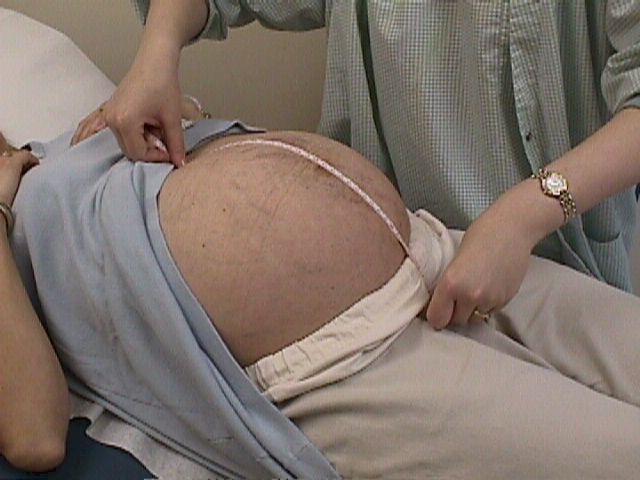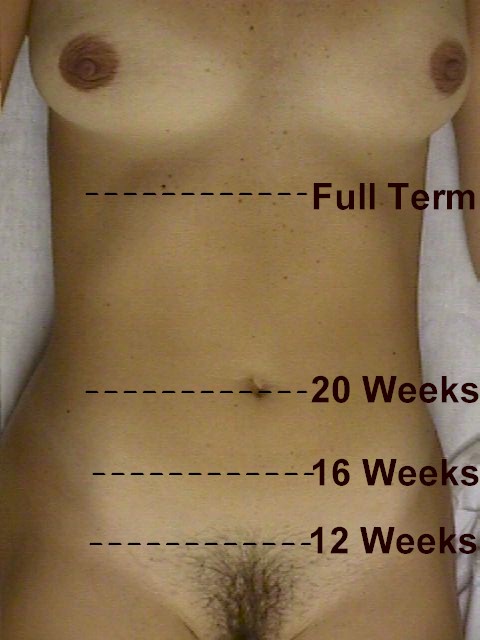Estimating Gestational Age
If everyone had normal, regular periods, every 28 days, and could remember exactly when their last period was, and ovulation always occurred on day #14 of the menstrual cycle, then
gestational age determination would be easy. These assumptions, however,
are not always the case. In real life, determining gestational age can be
challenging.
The estimated delivery date is calculated by adding 280 days to the first day
of the last menstrual period. An alternative method of determining the due date
is to add 7 days to the LMP, subtract three months, and add one year. These
calculations are made easier with the use of a pregnancy wheel or Gestational Age Calculator.

MacDonald's Rule
(Cm of fundal height = weeks gestation)

|
One way to approximate a pregnancy's current gestational age is to
use a tape measure to determine the distance from the pubic bone up over
the top of the uterus to the very top. That distance, measured in
centimeters, is approximately equal to the weeks of gestation, from
about mid-pregnancy until nearly the end of pregnancy. This is known as
MacDonald's Rule.
If a tape measure is unavailable, these rough guidelines can be used:
-
At 12 weeks, the uterus is just barely palpable above the pubic
bone, using only an abdominal hand.
-
At 16 weeks, the top of the uterus is 1/2 way between the pubic
bone and the umbilicus.
-
At 20-22 weeks, the top of the uterus is right at the umbilicus.
-
At full term, the top of the uterus is at the level of the ribs.
(xyphoid process).
Ultrasound can be used
to determine gestational age. Measurement of a crown-rump length during
the first trimester (1-13 weeks) will give a gestational age that is
usually accurate to within 3 days of the actual due date. During the
second trimester (14-28 weeks), measurement of the biparietal diameter
will accurately predict the due date within 10-14 days in most cases. In
the third trimester, the accuracy of ultrasound in predicting the due
date is less, with a plus or minus confidence range of as much as 3
weeks. A chart showing different ultrasound measurements at different
gestational ages in shown in the Ultrasound Gestational
Age Measurements chart.
1st Trimester Ultrasound Measurements
Gestational Age (Weeks) |
Sac Size |
CRL |
BPD |
4 |
3 |
|
|
5 |
6 |
|
|
6 |
14 |
|
|
7 |
27 |
8 |
|
8 |
29 |
15 |
|
9 |
33 |
21 |
|
10 |
|
31 |
|
11 |
|
41 |
|
12 |
|
51 |
21 |
13 |
|
71 |
25 |
|



